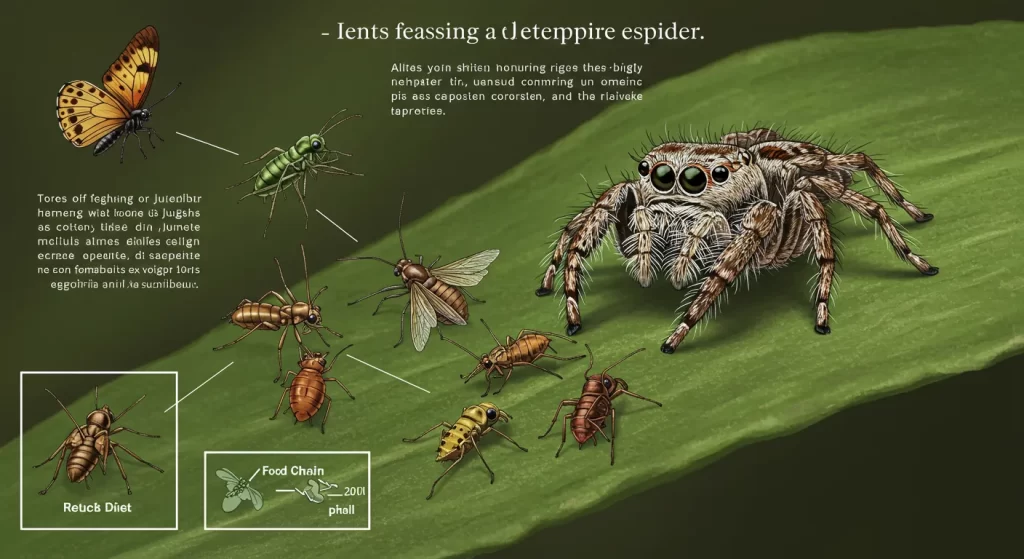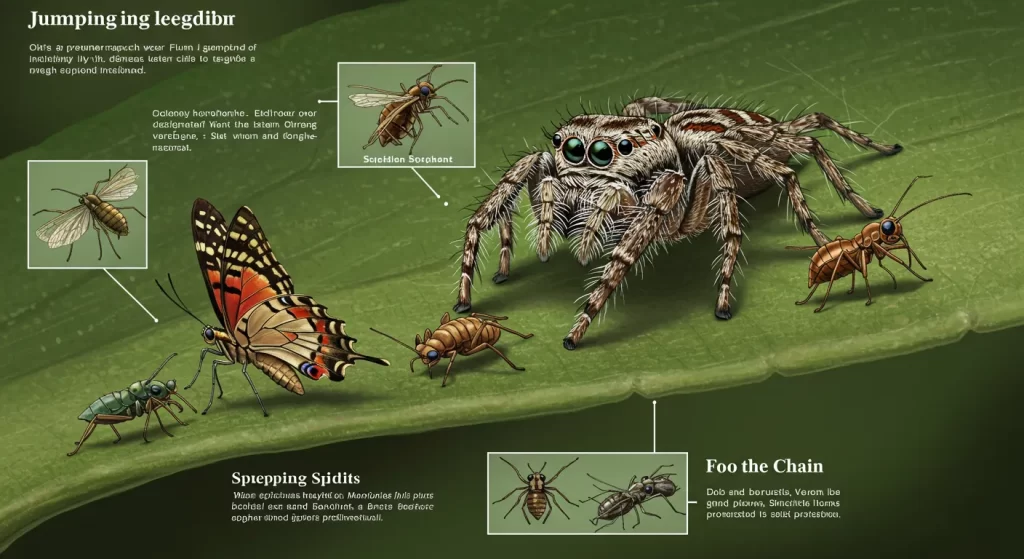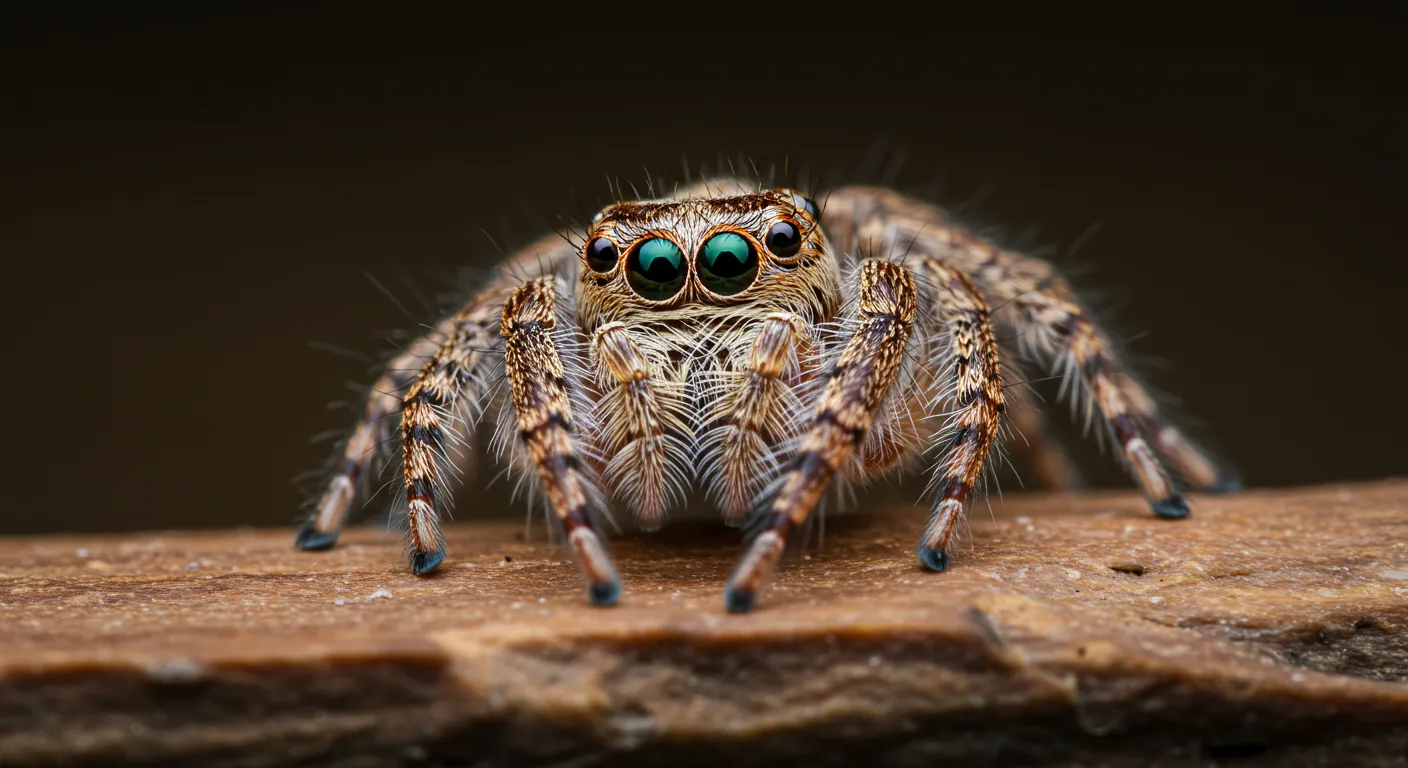Table of Contents
When it comes to the world of arachnids, few creatures are as captivating as the jumping spider. Known for their quirky behaviors and excellent vision, these tiny spiders have a remarkable ability to leap great distances to catch their prey.
what do jumping spiders eat, But what exactly do jumping spiders eat, and how do they survive in their environment? In this article, we’ll explore the diet of jumping spiders, how they hunt, and the fascinating ways in which they catch their food.
Jumping Spiders
Jumping spiders, part of the Salticidae family, are one of the most eclectic groups of spiders, with over 6,000 species identified worldwide. Unlike many other spiders, jumping spiders do not rely on webs to capture their prey.
Instead, they are active hunters, relying on their exceptional eyesight and remarkable agility to pounce on their meals. But just like any other predator, jumping spiders require a steady supply of food to survive, and their diet is as fascinating as their behavior.
A Diet Rich in Protein

what do jumping spiders eat, are primarily carnivorous, and they keep a diet that consists primarily of insects and different small arthropods. These spiders are opportunistic hunters, meaning they will consume whatever small creature they can capture.
Their diet includes ants, flies, mosquitoes, moths, beetles, and even other spiders. In fact, some species of jumping spiders are known to feed on other, larger spiders, including members of their own species.
How Jumping Spiders Hunt
Unlike many other spiders that create webs to catch prey, jumping spiders are active predators. They rely on their excellent vision to find potential prey from a distance.
Their eyes are large and forward-facing, allowing them to judge depth and distance with remarkable accuracy. Once a jumping spider spots its prey, it will begin to stalk its victim, moving closer while remaining hidden. Once it’s within striking distance, the spider will leap onto its prey, subduing it with a quick bite.
Also Read: What Is A Surety Bond For Jail: A Complete Guide
The Role of Vision in Their Hunting Strategy
The key to the jumping spider’s successful hunting strategy lies in its vision. Jumping spiders have four pairs of eyes, with the central pair being the largest and most important for hunting. what do jumping spiders eat.
These eyes give the spider a near 360-degree view of its surroundings, allowing it to detect movement from far away. In fact, the jumping spider’s eyes are so sophisticated that they can even detect polarized light, helping them track prey in different environments.
What Do Baby Jumping Spiders Eat?
Young jumping spiders, also known as spiderlings, have similar diets to adult spiders, though they typically focus on smaller prey. As soon as they are old enough to hunt, spiderlings will begin to capture tiny insects, such as aphids or small ants. Like their adult counterparts, they use their keen vision and jumping abilities to snare prey. As they grow, they will gradually start hunting larger insects.
How Do Jumping Spiders Catch Their Prey?

Jumping spiders are known for their spectacular ability to leap long distances. When hunting, they will first approach their prey by moving stealthily, positioning themselves in a way that allows them to spring forward with incredible speed.
Once they leap, they use their strong hind legs to propel themselves, landing directly on top of the prey. After the leap, the spider uses its fangs to deliver a bite, injecting venom that immobilizes the prey. This quick and efficient hunting style ensures that jumping spiders rarely go hungry.
Can Jumping Spiders Eat Plants?
Although jumping spiders are primarily carnivorous, they are not completely averse to plant matter in rare cases. However, their diet mainly consists of living, mobile creatures.
Some species may occasionally consume nectar or plant sap, but this is not a primary food source. It’s important to note that while these spiders may nibble on plants occasionally, they are not herbivores and rely on animal-based food for their survival.
How Often Do Jumping Spiders Need to Eat?
Jumping spiders don’t need to eat as frequently as some other predators. In general, they consume food every few days, depending on the size of their meal and the availability of prey. Because they are efficient hunters, a successful kill can provide them with enough energy for several days. However, when food is scarce, jumping spiders can go without eating for extended periods.
The Nutritional Value of Their Diet
The prey that jumping spiders consume provides them with essential nutrients, including proteins, fats, and carbohydrates. These nutrients are essential for their growth, reproduction, and energy. The protein they get from their diet supports the growth of their muscles and the production of silk, which they use for various purposes such as creating draglines, making egg sacs, and building shelters.
How Do Jumping Spiders Adapt to Different Food Sources?

Jumping spiders are highly adaptable creatures, able to hunt a wide range of prey depending on their environment. In urban areas, they may feed on houseflies, ants, or mosquitoes, while in natural habitats, they might hunt moths, beetles, and grasshoppers. Their ability to adjust to various food sources ensures their survival in diverse environments, from gardens to forests to homes.
The Fascinating World of Jumping Spider Behavior
Jumping spiders are not only remarkable for their hunting techniques but also for their social and reproductive behaviors. Male jumping spiders often perform elaborate courtship displays to attract females, which may include dances, leg waving, and even offering prey as gifts. This unique behavior helps ensure that the strongest and most fit males pass on their genes to future generations.
A Carnivorous Diet for a Skillful Hunter
Jumping spiders are fascinating carnivores with a diverse diet that consists mainly of insects and different small critters. Their hunting strategy, which relies on their incredible vision and impressive jumping ability, ensures they can capture prey with efficiency and skill.
Whether they are hunting ants in a garden or catching moths in a forest, jumping spiders continue to amaze us with their exceptional hunting tactics and remarkable adaptability. Understanding what jumping spiders eat not only deepens our appreciation for these tiny hunters but also highlights the complex food webs that exist in nature.
As you observe these spiders in your backyard or home, remember that they are not just fascinating creatures—they play an important role in controlling insect populations. So, the next time you see a jumping spider, take a moment to marvel at its incredible hunting skills.
FAQs
What do jumping spiders eat?
Jumping spiders primarily eat insects like ants, flies, and moths, as well as other small arthropods they can catch with their agile hunting skills.
How do jumping spiders hunt?
Jumping spiders use their excellent vision to stalk and leap onto their prey, delivering a quick bite to immobilize and consume it.
Do jumping spiders eat plants?
While mainly carnivorous, jumping spiders may occasionally consume plant sap or nectar, but their primary diet consists of animal-based food.

